Dawes Act
Learn about the 1887 law that divided Native American tribal lands and its lasting impact on Native communities.
What Was the Dawes Act?
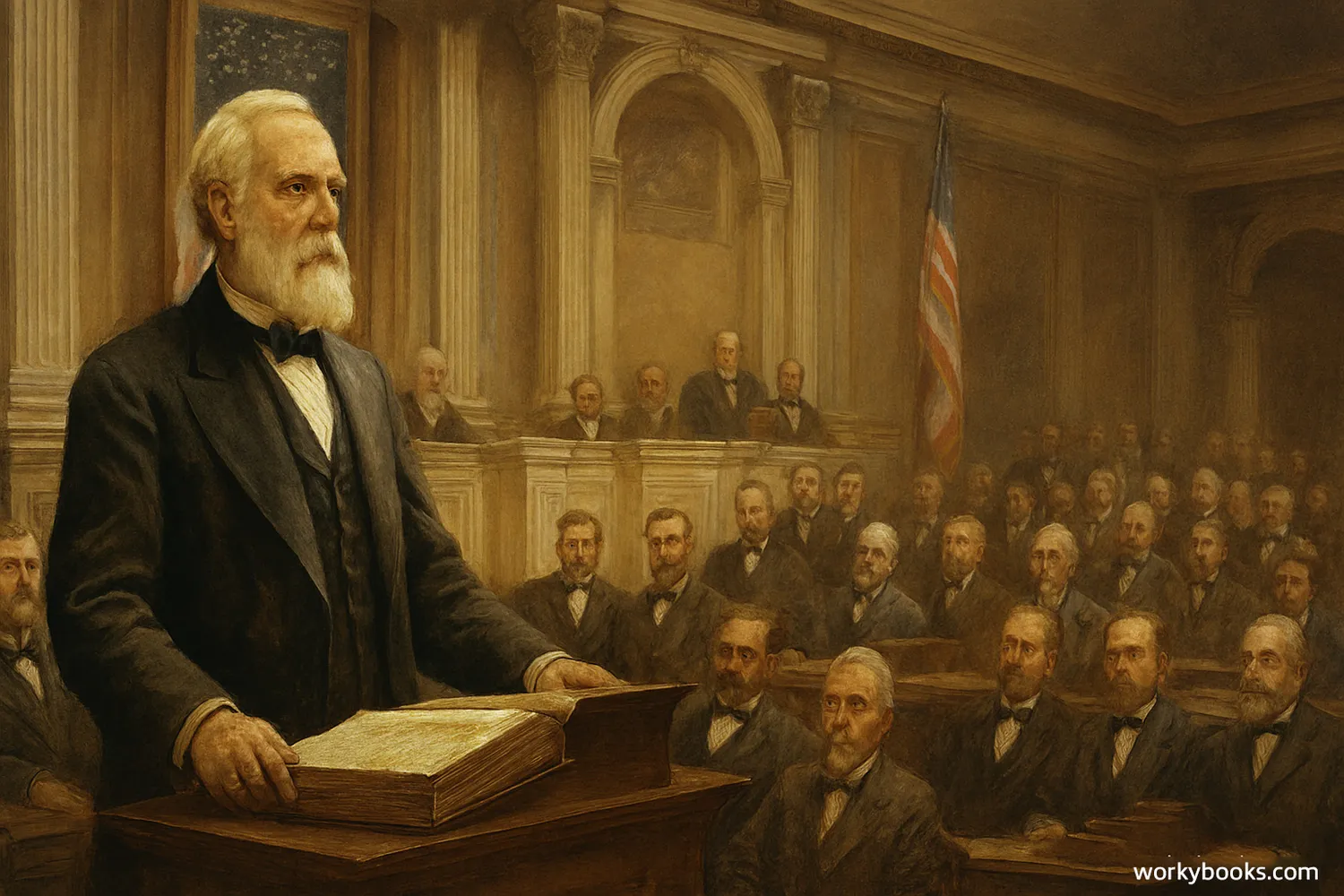
The Dawes Act, also known as the General Allotment Act, was a United States law passed in 1887. It was named after Senator Henry L. Dawes of Massachusetts, who was its main supporter. The law aimed to change how Native American tribes owned and used their land.
Before the Dawes Act, Native American tribes owned land together as communities. The Dawes Act divided these tribal lands into smaller pieces called allotments that were given to individual Native Americans. The government hoped this would encourage Native Americans to adopt farming and become more like European-American settlers.
Did You Know?
The Dawes Act was officially called the "General Allotment Act of 1887" and was signed into law by President Grover Cleveland on February 8, 1887.
Purpose and Goals of the Dawes Act
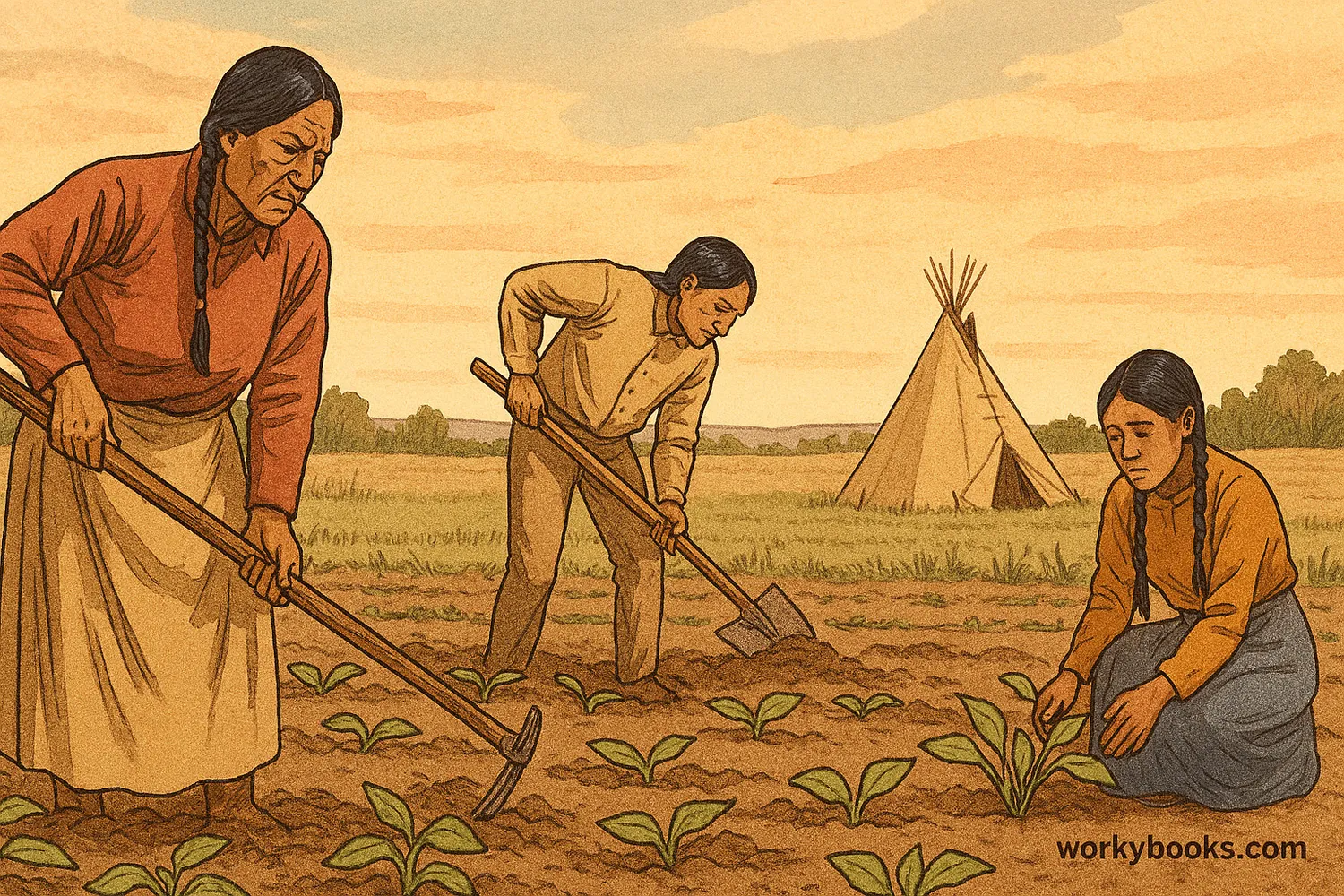
The main goals of the Dawes Act were based on the idea of assimilation - making Native Americans adopt the culture and lifestyle of white Americans. Supporters believed this would help Native Americans "civilize" and become part of mainstream American society.
The law had several specific purposes:
Break Up Tribal Lands
Divide communally owned tribal lands into individual plots
Encourage Farming
Promote European-style agriculture among Native Americans
Assimilation
Encourage Native Americans to adopt American customs and values
Reduce Government Costs
Make Native Americans self-sufficient and reduce government support
Many supporters of the Dawes Act genuinely believed they were helping Native Americans. However, they didn't understand or value Native American cultures and traditions. They thought their way of life was superior and that Native Americans would be better off adopting it.
How the Dawes Act Was Implemented
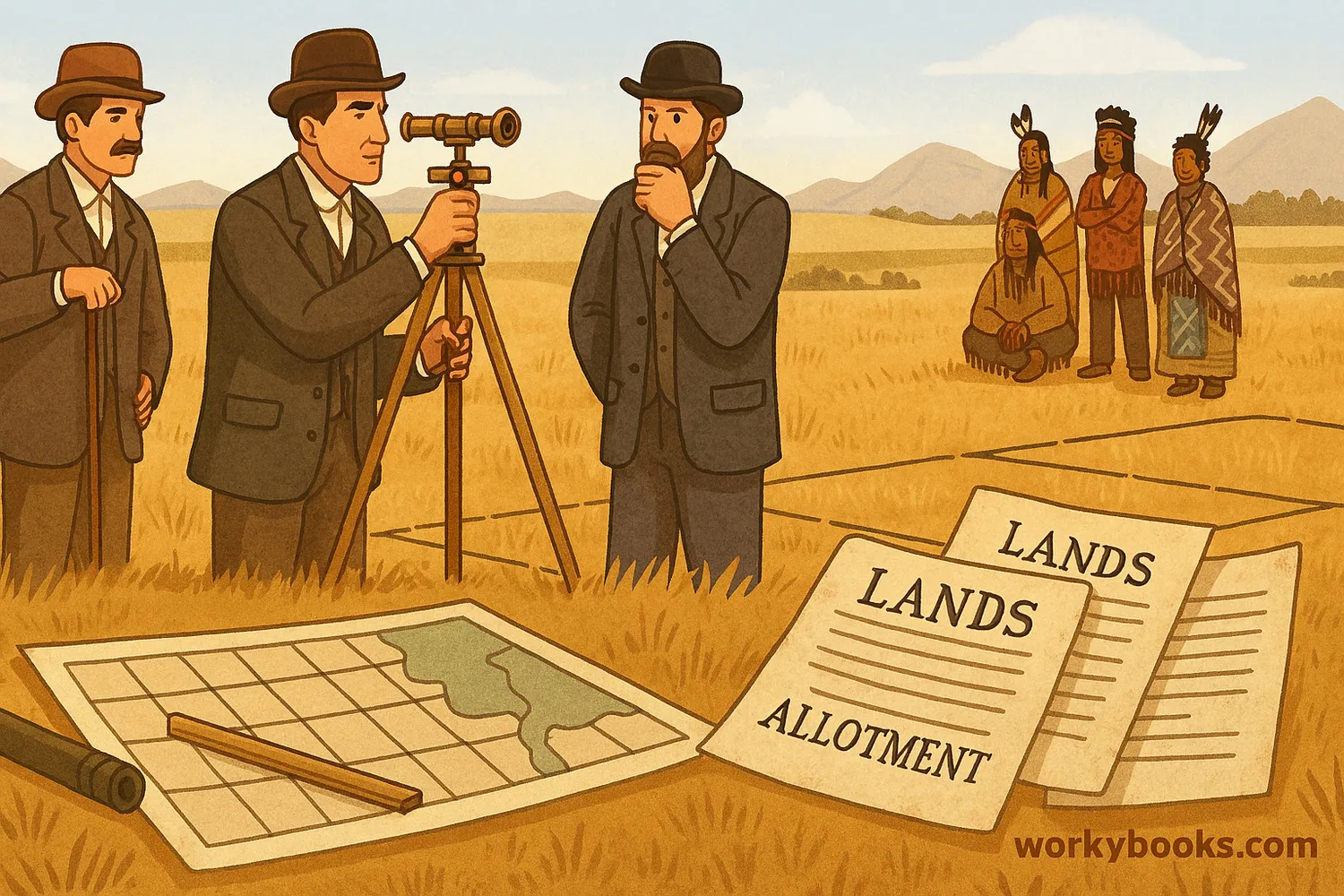
The implementation of the Dawes Act followed a specific process:
Law Passed
Congress passed the Dawes Act, authorizing the division of tribal lands
Land Division
Government agents surveyed tribal lands and divided them into allotments
Trust Period
Allotted lands were held in trust by the government for 25 years
Land Ownership
After the trust period, Native Americans received full ownership of their allotments
Under the Dawes Act, each head of a Native American family received 160 acres of land. Single adults received 80 acres, and children received 40 acres. After 25 years, they would receive full ownership and United States citizenship. Any "surplus" land left after allotments were made was sold to white settlers.
Impact on Native Americans
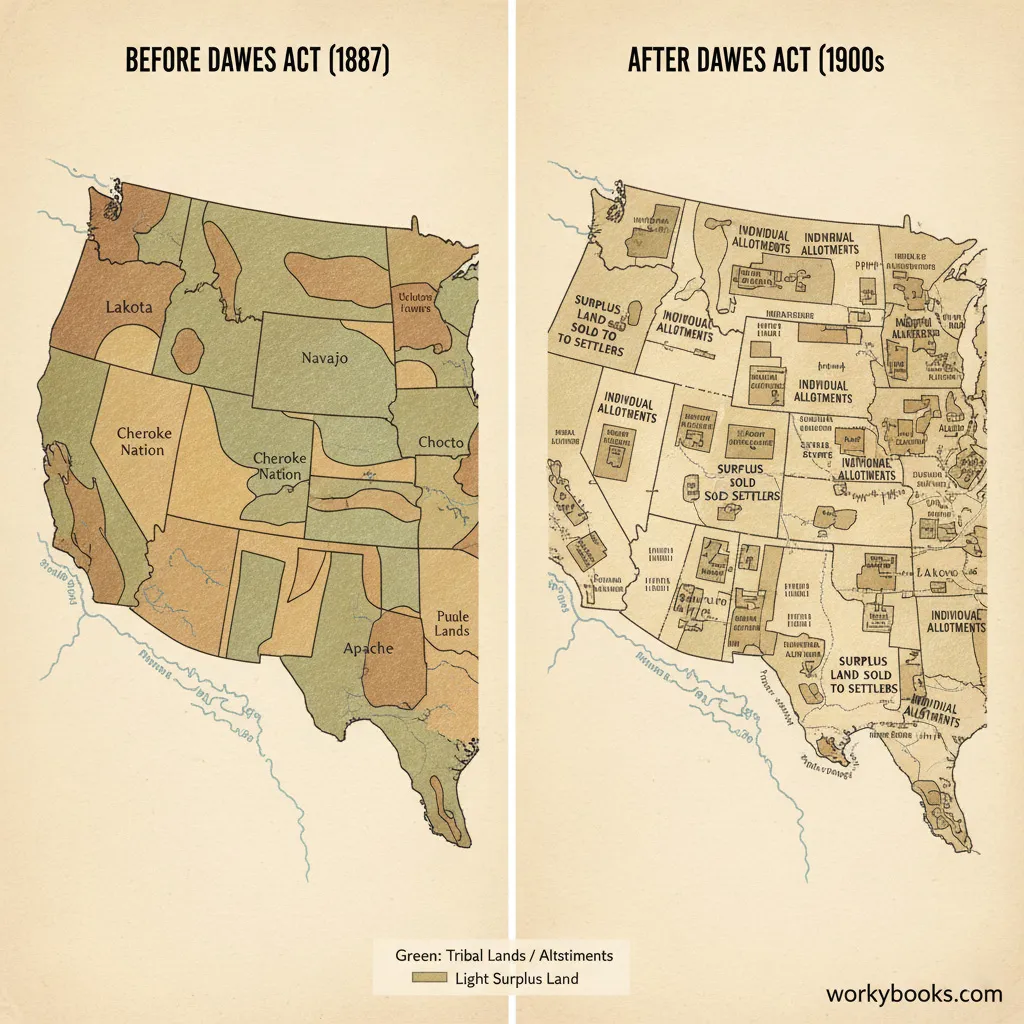
The Dawes Act had significant and mostly negative impacts on Native American communities:
Land Loss
Native Americans lost about 90 million acres of their ancestral lands
Cultural Damage
Tribal communities and cultural traditions were weakened
Poverty
Many Native Americans lost their allotments and became impoverished
The Dawes Act failed to achieve its goal of turning Native Americans into successful farmers. Many lacked farming experience, tools, and capital. Additionally, the allotted land was often of poor quality for agriculture. Many Native Americans were forced to sell their land, leading to further loss of tribal territory.
Important Note
Not all tribes were affected by the Dawes Act. The "Five Civilized Tribes" (Cherokee, Chickasaw, Choctaw, Creek, and Seminole) were initially exempt but were later subjected to similar land division policies.
Repeal and Legacy
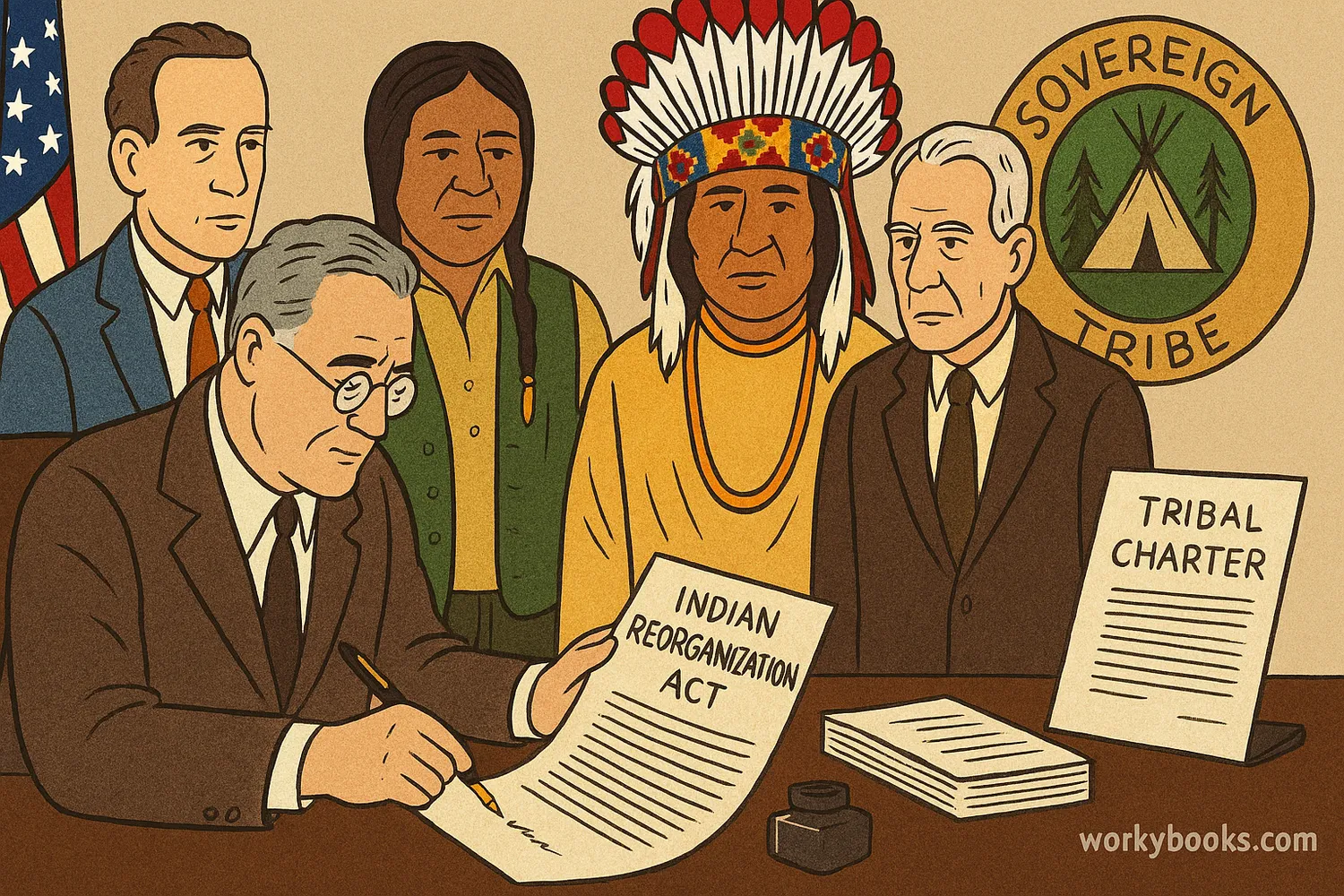
The negative effects of the Dawes Act became increasingly clear over time. In 1934, the United States government officially changed its policy toward Native Americans with the passage of the Indian Reorganization Act (also known as the Wheeler-Howard Act).
This new law:
- Ended the allotment of tribal lands
- Allowed tribes to reorganize their governments
- Provided funds for tribes to purchase new land
- Encouraged preservation of Native American cultures
The Indian Reorganization Act didn't completely reverse the damage done by the Dawes Act, but it marked an important shift in U.S. policy. Instead of trying to force Native Americans to assimilate, the government began to recognize the value of tribal sovereignty and cultural preservation.
Today, the Dawes Act is widely viewed as a failed policy that caused significant harm to Native American communities. It serves as an important lesson about the dangers of imposing one culture's values on another.
Dawes Act Quiz
Test your knowledge about the Dawes Act! Answer all 5 questions to see how much you've learned.
Frequently Asked Questions
Here are answers to common questions about the Dawes Act:
Dawes Act Trivia
Discover interesting facts about the Dawes Act and its impact!
Massive Land Loss
Before the Dawes Act, Native Americans controlled about 150 million acres of land. By 1934, when the policy ended, they had lost about two-thirds of that land - approximately 90 million acres.
Cultural Impact
The Dawes Act intentionally tried to break up tribal communities and traditions. By dividing land individually, it undermined the communal way of life that was central to many Native American cultures.
Legal Framework
The Dawes Act was part of a larger government policy often called "Allotment and Assimilation." This policy lasted for nearly 50 years and affected most Native American tribes in the United States.
Lasting Effects
The effects of the Dawes Act are still felt today. Many reservations have a "checkerboard" pattern of land ownership, with tribal, individual Native American, and non-Native owned lands mixed together.


